GTM Template Guide: Master Your Go-To-Market in 2025


B2B SaaS markets in 2025 are evolving faster than ever. A winning go-to-market strategy is the difference between rapid growth and falling behind. Yet, aligning product, marketing, and sales for scalable success remains a major hurdle for most teams.
This guide is your roadmap to mastering the process with a proven gtm template. Discover what a gtm template is, why it is critical for 2025, and how it drives alignment, clarity, and faster execution across your organization.
Ready to gain a competitive edge? Read on to build a high-impact GTM plan that turns strategy into measurable results.
What is a GTM Template and Why You Need One in 2025
A gtm template is a reusable, customizable framework designed to help B2B SaaS teams plan and execute go-to-market strategies with precision. By providing a structured approach, a gtm template streamlines complex product launches, improves cross-team alignment, and reduces the risk of costly errors.
Unlike a traditional marketing plan, a GTM strategy focuses on uniting product, marketing, and sales into a single growth function. This difference is crucial for SaaS companies facing rapid market shifts in 2025. Leading organizations now rely on templates to address trends like increased cross-functional collaboration, integration of AI-driven tools, and the need for speed in execution.
Common gtm template use cases:
- Launching a new SaaS product or feature
- Entering a new market segment
- Repositioning an existing solution for a different audience
Competitor benchmarks prove the impact: xtype.io achieved 60% pipeline contribution, while Hadean saw 300% lead growth using structured GTM processes. In today’s fast-moving SaaS environment, agility and repeatability are essential. As highlighted in the Data-Driven Go-to-Market Strategy Template for 2025, using a robust template helps teams scale and adapt quickly, turning GTM execution into a repeatable growth engine.
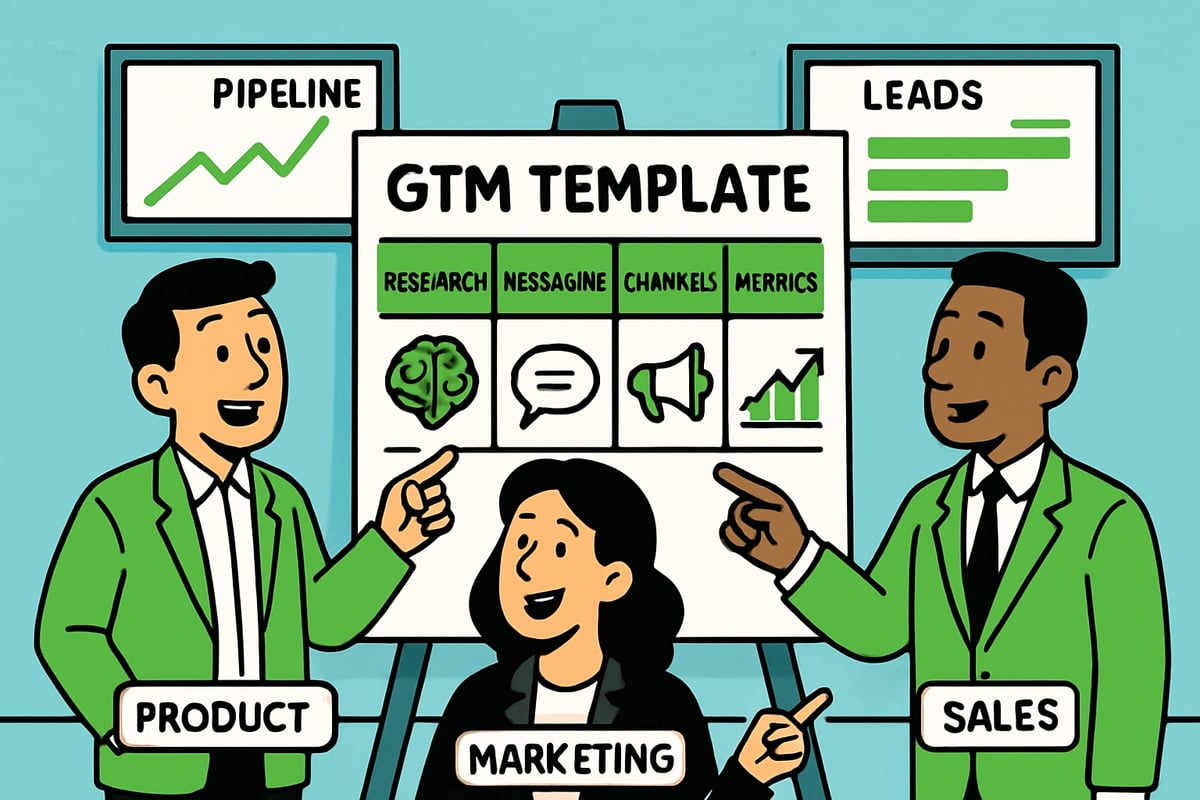
Core Components of a High-Impact GTM Template
A high-impact gtm template brings structure and clarity to every SaaS launch, helping teams align on what matters most. By standardizing critical phases, it becomes easier to coordinate, track, and optimize go-to-market execution for measurable results.
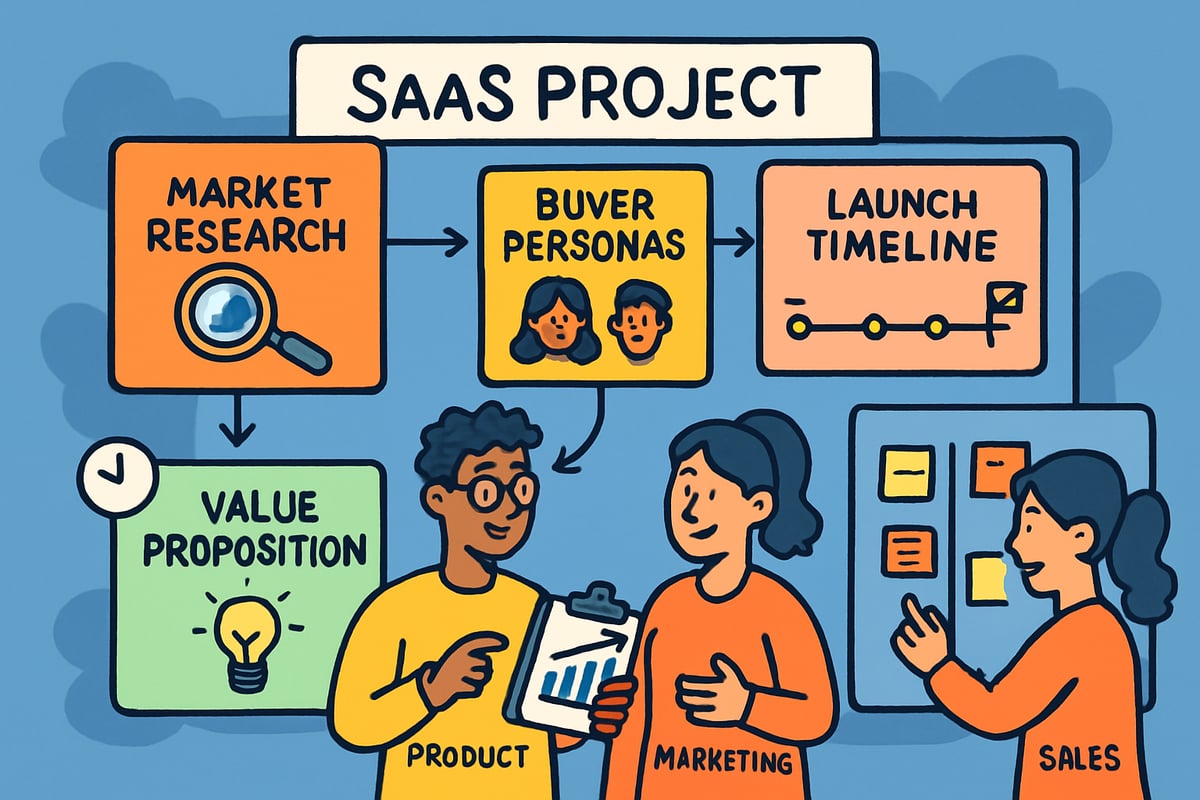
Essential Sections of a GTM Template
A gtm template should cover every stage of launch planning:
- Market Research: Gather insights on competitors, trends, and customer needs.
- Target Audience: Define buyer personas and market segments.
- Value Proposition & Messaging: Articulate what makes your product unique.
- Sales Strategy: Document pricing, sales motions, and enablement assets.
- Marketing Channels: Map out channel mix and campaign tactics.
- Launch Timeline: Schedule key activities, milestones, and deliverables.
- Success Metrics: Set clear KPIs like pipeline contribution or ARR impact.
For example, Asana and HubSpot templates include buyer persona details, competitive analysis, pricing strategy, and a visual launch timeline. For more real-world examples, see these top GTM strategy templates.
Cross-Functional Features and Visual Tracking
Effective templates assign clear ownership for each section, ensuring product, marketing, and sales leaders are accountable. Integrated task dependencies help teams see what must happen before moving forward. Visual tools like Kanban boards, Gantt charts, or dashboards make it simple to monitor progress and spot bottlenecks.
- Assign tasks and due dates to specific owners.
- Use visual timelines to keep teams on track.
- Integrate milestones to highlight critical checkpoints.
- Enable template reusability for future launches.
Built-in collaboration features, such as document sharing and real-time updates, are essential for transparent and agile execution.
Common Mistakes and How to Avoid Them
Avoid these pitfalls in your gtm template:
| Mistake | Solution |
|---|---|
| Missing critical phases | Standardize all sections |
| Unclear responsibilities | Assign owners for each task |
| No measurable objectives | Define KPIs up front |
A well-designed gtm template is not just a checklist, but a dynamic framework for repeatable, scalable SaaS growth.
Step-by-Step: How to Build Your GTM Template for 2025
Building a robust gtm template for 2025 starts with a clear process and cross-functional alignment. Here is a proven, step-by-step approach to ensure your SaaS team delivers scalable, repeatable GTM success.
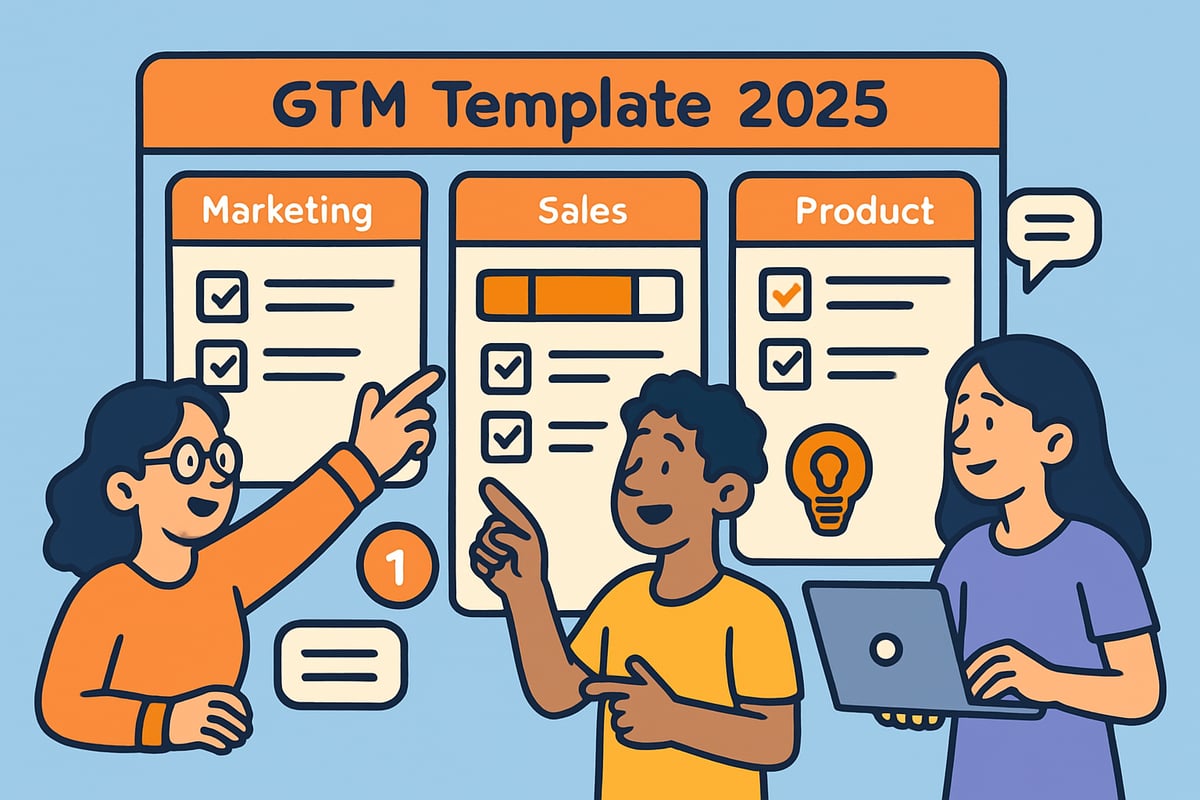
Step 1: Review Past Launches
Analyze previous product or market launches to identify patterns, repeatable phases, and bottlenecks. Gather feedback from product, marketing, and sales to surface what worked and what stalled.
Step 2: Map the End-to-End GTM Process
Outline every phase, from initial research to post-launch analysis. Use a visual tool like a Kanban board or Gantt chart to map dependencies. For a detailed approach, see the Creating a Go-to-Market Strategy in 2025 guide.
Step 3: Define Key Template Sections
Standardize core sections such as market research, target audience, messaging, sales tactics, channel mix, enablement, and KPIs. Clarify what deliverables are required at each phase.
Step 4: Assign Owners and Set Dependencies
Allocate clear task ownership for every section. Use dependency mapping to show which actions unlock the next phase, preventing delays and confusion.
Step 5: Integrate Tools for Visibility
Connect your gtm template with project management, communication, and file-sharing tools. For example, link Asana for milestones, Slack for real-time updates, and Google Workspace for shared documentation.
Step 6: Add Customizable Fields
Enable fields for launch-specific details like target segments, verticals, or unique value propositions. This makes the gtm template adaptable for new products or market entries.
Step 7: Set Up Visual Tracking
Implement dashboards, timeline views, or milestone trackers. Asana’s Timeline View and multi-project assignments are great for monitoring progress and keeping all teams up to date.
- Example: A SaaS team launching into healthcare markets customizes the gtm template to include regulatory requirements and buyer personas unique to that vertical.
- Example: Milestone tracking ensures product, marketing, and sales all hit enablement deadlines in sync.
A flexible, well-integrated gtm template not only clarifies roles and timelines but also accelerates time-to-market and pipeline growth. By rigorously following these steps, SaaS teams can build scalable frameworks that adapt to any launch scenario.
Best Practices for Using and Iterating Your GTM Template
Constantly refining your gtm template is essential for driving sustainable growth and operational excellence in B2B SaaS. Treat your template as a dynamic asset that evolves with every launch, not a one-time checklist.
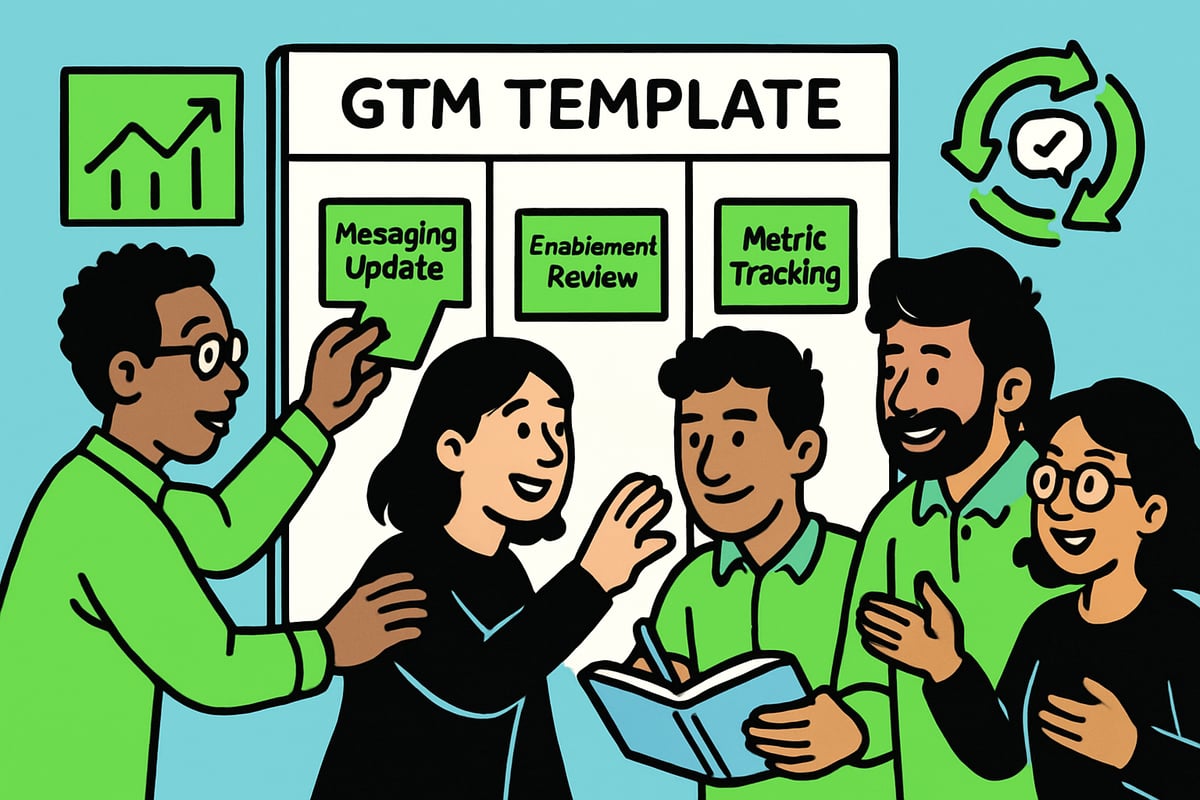
Continuous Improvement and Alignment
After every launch, schedule a review session to identify what worked well and what needs adjustment. Involve product, marketing, and sales leaders to ensure every perspective is covered. Use feedback to update sections such as messaging, enablement materials, and sales playbooks.
- Hold regular cross-functional check-ins to keep the gtm template aligned with your evolving strategy.
- Capture lessons learned to prevent repeat mistakes.
- Standardize kick-off tasks and visualize phases for every launch.
Metrics, Examples, and Flexibility
Track key metrics including time-to-market, pipeline contribution, and lead conversion rates. Monitor these KPIs to pinpoint bottlenecks and opportunities for optimization.
For example, if buyer feedback indicates confusion about your value proposition, update your messaging section. If your sales cycle lengthens, refine enablement content or revisit your target persona definitions. Flexibility is vital, so adapt your gtm template for different segments, products, or geographies as needed.
Leverage data and feedback loops to drive ongoing improvements. According to Why go-to-market strategies fail, teams that skip regular reviews or fail to update their templates risk falling into common execution pitfalls.
The most successful SaaS teams treat their gtm template as a living document. By iterating consistently, you enable faster launches, better alignment, and measurable revenue impact.
FAQs: GTM Templates and Go-To-Market Planning
A gtm template streamlines strategic launches and helps align teams for B2B SaaS growth. Here are the most frequently asked questions:
| Question | Answer |
|---|---|
| What is the main purpose of a gtm template? | To provide a structured, repeatable framework for planning and executing go-to-market strategies, improving efficiency and alignment. |
| Which tasks and phases are usually included? | Market research, audience targeting, messaging, sales and marketing tactics, enablement, and measurement of success. |
| How do gtm templates differ from traditional marketing plans? | A gtm template integrates sales, product, and marketing into a unified process, while a marketing plan focuses solely on promotional tactics. For more, see the Go-to-Market Strategy Guide for 2025. |
| Common pitfalls to avoid? | Missing key phases, unclear ownership, and lack of measurable objectives. |
| Can templates be reused for different launches? | Yes, with minor adjustments for audience, product, or market. |
| How do integrations support execution? | Tools like Slack and Figma enable real-time updates, centralized files, and better collaboration. |
| What metrics should you track? | Pipeline contribution, time-to-market, and lead conversion rates. |
A gtm template is essential for scalable, repeatable success, especially as B2B SaaS teams adapt to rapid market shifts.
If you’re ready to move from scattered efforts to a truly unified go to market strategy, you don’t have to figure it out alone. At GTM Consult, we work closely with B2B SaaS teams to turn proven frameworks into scalable, repeatable revenue engines—whether you’re refining your template, aligning teams, or navigating a new market. Our expertise spans from market positioning to operational dashboards, all designed to help you master your GTM process for 2025 and beyond. If you want tailored guidance or just want to talk through your GTM challenges, Book a free meeting with us today.

Latest From
The Blog
Go To Market Strategy Consulting Guide For 2025 Success

Go To Market Strategy McKinsey Guide For Success 2025

Crossing the Enterprise Chasm: A Practical Guide to Sales-Led Growth (SLG)


Let's Build The Future Together



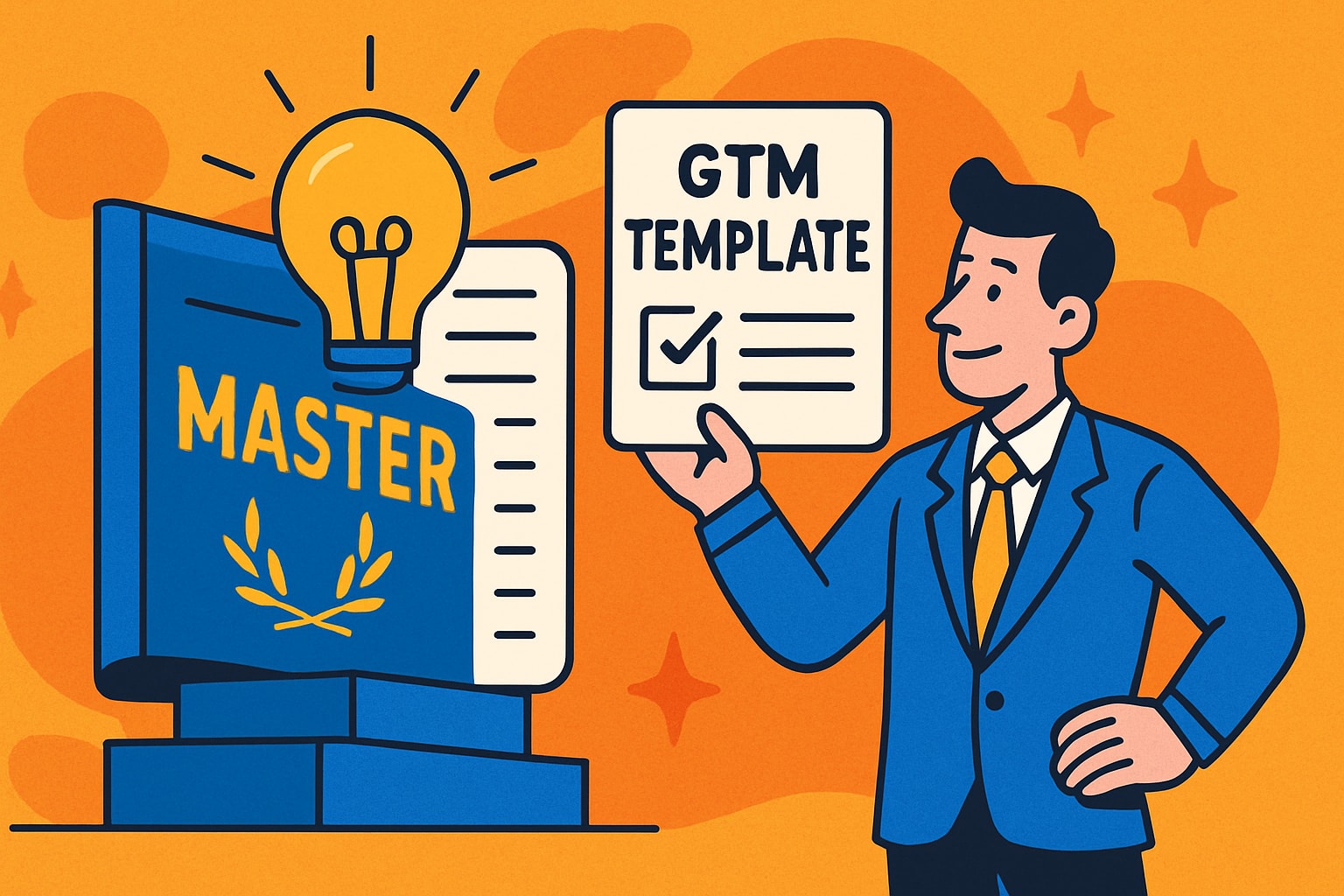
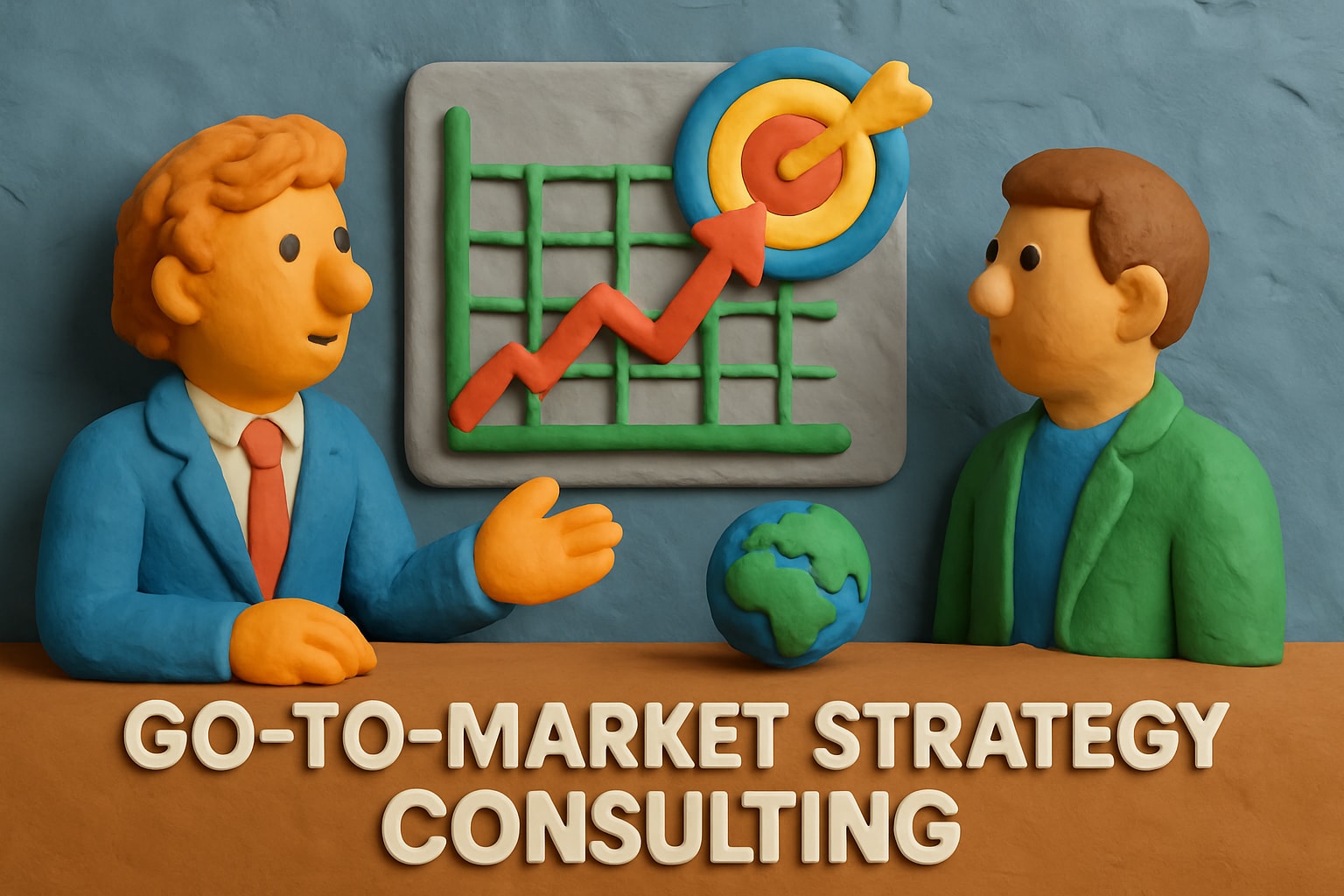

.jpg)